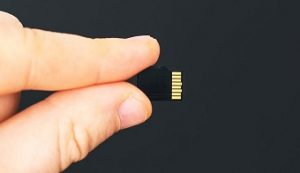
With increased demands being placed on safety and security globally, and supported by advancements in IP cameras and 360-degree camera technology, the video surveillance industry is growing steadily. Market research indicates that this worldwide industry is expected to reach an estimated $39.3 billion in revenue by 2023, driven by a CAGR of 9.3 percent from 2018 to 2023.
Video surveillance is not just about capturing footage (to review an event or incident when it occurs), but also about data analysis delivering actionable insights that can improve operational efficiencies, better understand customer buying behaviours, or simply just provide added value and intelligence. To ensure that the quality of the data is good enough to extract the details required to drive these insights, surveillance cameras are technologically evolving as well, not only with expanded capabilities surrounding optical zoom and motion range, but also relating to improvements in signal-to-noise (S/N) ratios, light sensitivities (and the minimum illumination needed to produce usable images), wide dynamic ranges (WDR) for varying foreground and background illumination requirements, and of course, higher quality resolutions.
As such, 4K Ultra HD-compliant networked cameras are expected to grow from 0.4 percent shipped in 2017, to 28 percent in 2021, representing an astonishing 170 percent growth per year, and will require three to six times the storage space of 1080p video dependent on the compression technology used. Surveillance cameras are typically connected to a networked video recorder (NVR) that acts as a gateway or local server, collecting data from the cameras and running video management software (VMS), as well as analytics. Capturing this data is dependent on the communications path between individual cameras and the NVR. If this connection is lost, whether intentional, unintentional, or a simple malfunction, surveillance video will no longer be captured and the system will cease operations.
Therefore, it has become common to use microSD cards in surveillance cameras as a failsafe mechanism. Despite lost connectivity to the NVR, the camera can still record and capture raw footage locally until the network is restored, which in itself, could take a long time depending on maintenance staff or equipment availability, weather conditions, or other unplanned issues. Since microSD cards play a critical role as a failsafe mechanism to ensure service availability, it is important to choose the right card for capturing video footage.
There are many different microSD cards to choose from for video capture at the network’s edge, and they range from industrial grade capabilities to commercial or retail grade, and everything in-between. To help make some of these uncertainties a little more certain, here are the key microSD card characteristics for video capture.
As the market enjoys steady growth, storage vendors want to participate and have done so with a number of repurposed, repackaged, remarketed microSD cards targeted for video surveillance but with not much robustness, performance or capabilities specific to the application. Adding the absence of mean-time between failure (MTBF) specifications to the equation, microSD card reliability is typically a perceived measurement — measured in hours of operation and relatively vague and hidden under metrics associated with the camera’s resolution and compression ratio.
Therefore, when selecting a microSD card for surveillance cams at the edge, the choice should include a vendor that is trusted, has experience and a proven storage portfolio in video surveillance, and in microSD card technologies. Endurance, as it relates to microSD cards, represents the number of rewrites (program/erase cycles) that are possible before the card can no longer store data correctly. The rewrite operation is cyclical whereby a new stream of footage replaces older content by writing over it until the card is full, and the cycle repeats.
The higher the endurance, the longer the card will perform before it needs to be replaced. Endurance is also referred to in terabytes written (TBW) or by the number of hours that the card can record continuously (while overwriting data) before a failure will occur.
Health monitoring is a desired capability that not many microSD cards currently support and enable the host system to check when the endurance levels of a card are low and it needs to be replaced. Having a card that supports this capability enables system integrators and operators with the ability to perform preemptive maintenance that will help to reduce system failures, as well as associated maintenance costs.
To capture continuous streams of raw footage, microSD cards within surveillance cams perform write operations about seventy to ninety percent of the time, whereas reading captured footage is performed about ten to thirty percent. The difference in read/write performance is dependent on whether the card is used in an artificial intelligence (AI) capable camera, or a standard one.
As microSD cards must be designed for continuous operation in extreme weather conditions and a variety of climates, whether located indoors or out, support for various temperature ranges are another consideration. Given the wide spectrum of temperatures required by the camera makers, microSD cards deployed within surveillance cameras should support temperature ranges from -25 degrees Celsius to 85 degrees Celsius, or in extreme cases, as low as -40 degrees Celsius.
Selecting the right-sized capacity is also very important as there needs to be a minimum level to ensure that there is enough room to hold footage for a number of days or weeks before it is overwritten or the connectivity to the NVR is restored. Though 64GB is considered the capacity sweet spot for microSD cards deployed within surveillance cameras today, lower capacity support of 32GB can provide room to attract the smaller or entry-level video surveillance deployments. In the future, even higher capacities will be important for specific use cases and will potentially become standard capacities as the market evolves.
When choosing the right storage microSD card to implement into your video surveillance system, make sure the card is designed specifically for the application – does it include the right levels of endurance and performance to capture continuous streams – can it withstand environmental challenges and wide temperature extremes – will it enable preventive and preemptive maintenance to provide years of service?
It is critical for the surveillance system to be able to collect video footage whether the camera is connected to an NVR or is a standalone camera, as collecting footage at the base of the surveillance system is the most crucial point of failure. As such, failsafe mechanisms are required to keep the camera recording until the network is restored












